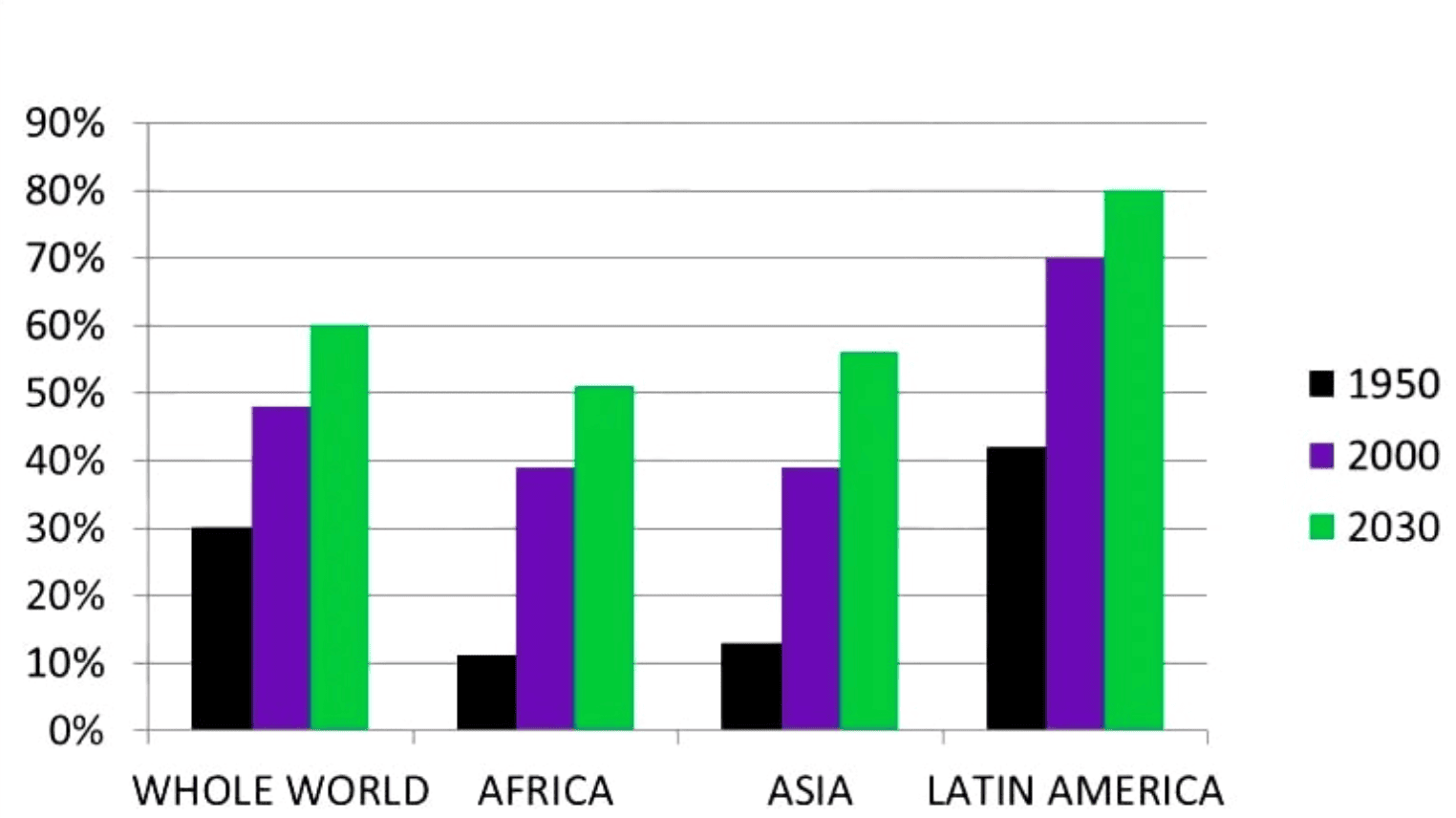The chart below gives information about the growth of urban population in certain parts of the world including the prediction of the future. Summarise the information by selecting and reporting the main features and make comparisons where relevant.

The bar chart illustrates the proportion of urban population in four regions—Whole World, Africa, Asia, and Latin America—in 1950 and 2000, with a forecast for 2030.
Overall, urban population growth has steadily increased across all regions over the 80-year period, with Latin America showing the most significant rise, while Africa consistently records the lowest urbanization rate.
In 1950, the global urban population was around 30%, with Latin America at approximately 40%, Asia at 15%, and Africa at just 10%. By 2000, the worldwide figure had risen to 50%. Latin America experienced a marked increase to 70%, making it the most urbanized region, whereas Asia and Africa saw moderate growth to 40% and 15%, respectively.
Looking ahead to 2030, the global urban population is projected to reach 60%. Latin America is expected to peak at 80%, maintaining its leading position. Asia’s urbanization rate is forecasted to climb to 55%, while Africa, despite doubling to 20%, will remain the least urbanized region.
(162 words)
Từ vựng hữu ích:
